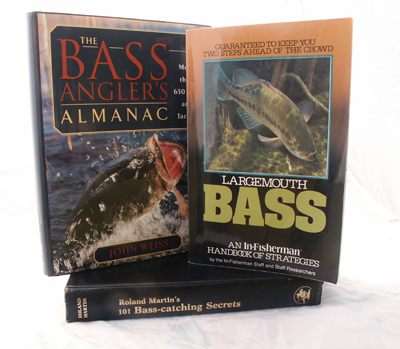5 Star Book Rating on Bass Fishing

Beginning with Roland Martin’s book, 101 Bass-Catching Secrets, published in 1980, I have read nine popular bass fishing books. The latest bass fishing book that I have devoured is The Bass Angler’s Almanac by John Weiss, published in 1991 by Lyons Press. Although I highly recommend the book and enjoyed the Question:Answer format, my first choice for a comprehensive teaching book on bass fishing remains Largemouth Bass – An In-Fisherman Handbook of Strategies.
Like a good textbook, the chapters are logically organized and clearly introduced in the table of contents for future reviews. The book covers the history of bass fishing in this country, bass biology, bass survival and adaptability, bass distribution, pattern fishing, lures and equipment and much more. A new angler to bass fishing can easily be overwhelmed by specialized vocabulary and references to techniques and terminal gear when picking up a bass fishing magazine. They may ask themselves what a neutral bass is. Could it be a bass who doesn’t take sides in an environmental debate? Is it a half-way submerged or suspended bass? Naturally, most of these specialized terms may be understood with contextual clues. However, if a beginning angler doesn’t know what a Carolina or Texas rig is or the meaning of Wacky Style, he or she needs this book now. If you forgot the meaning of pelagic or seiche, no problem, the writing staff has provided a glossary at the back of the book.
Any good text book should be well balanced with photographs, charts, diagrams and cartoons. This handbook has all of that including data from research that directly impacts anglers on the water. In addition to the thoroughness in reviewing the categories of lures, the staff provides a strategy for pattern fishing for bass. The authors state that a “pattern includes three basic components: (1) circumstances such as season, time of day, cover, water clarity, and other factors; (2) location, or types of areas to fish (specific spots in water); and (3) presentation including lure type, tackle, and mode of presentation. A proven pattern states: ‘If certain conditions exist, bass will be active in a particular habitat and I can catch them by fishing a prescribed way.’” You will definitely catch more bass after studying this book. It’s a great read.
Dave Archer
www.bassandtroutfishingdigest.com